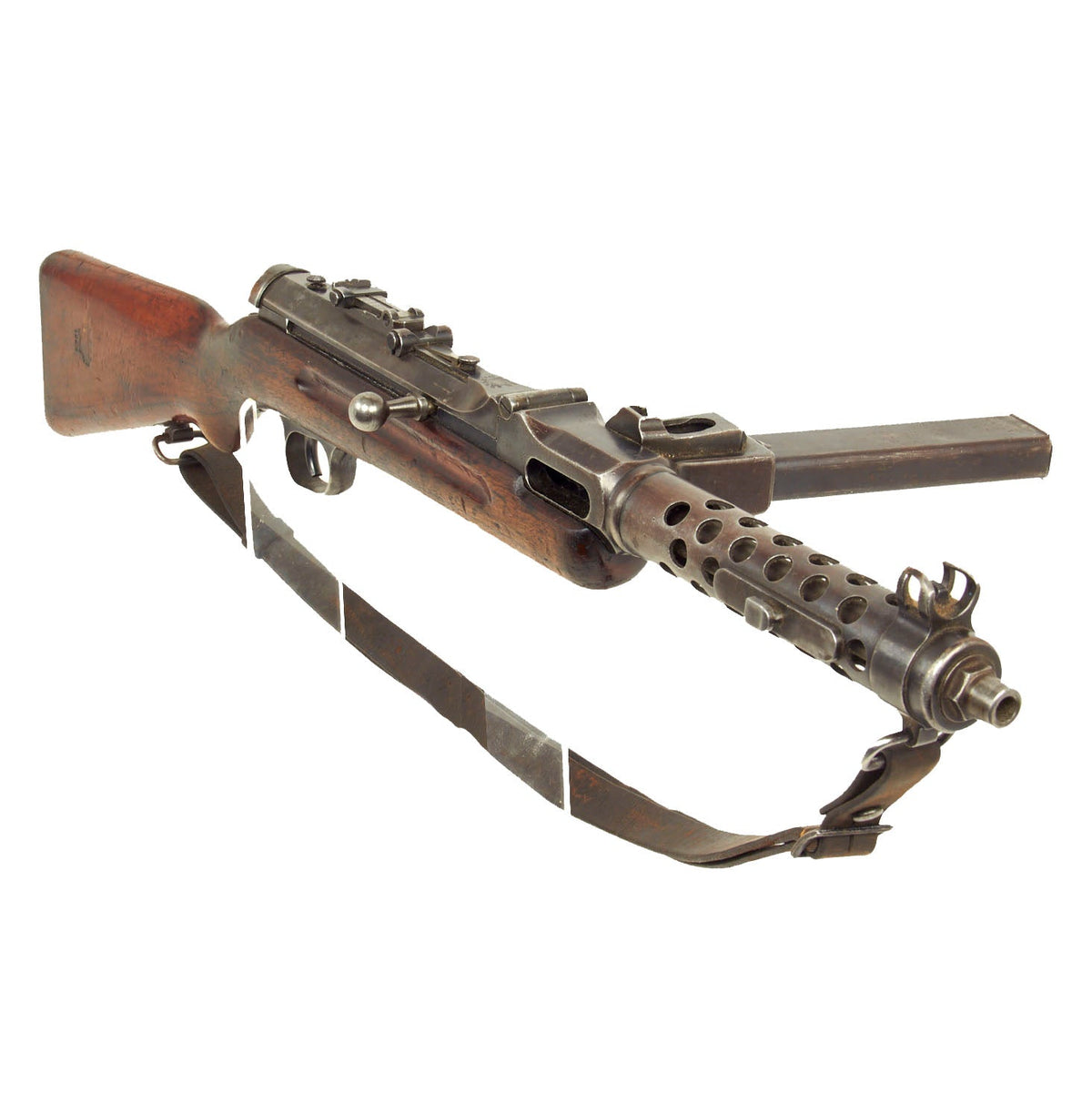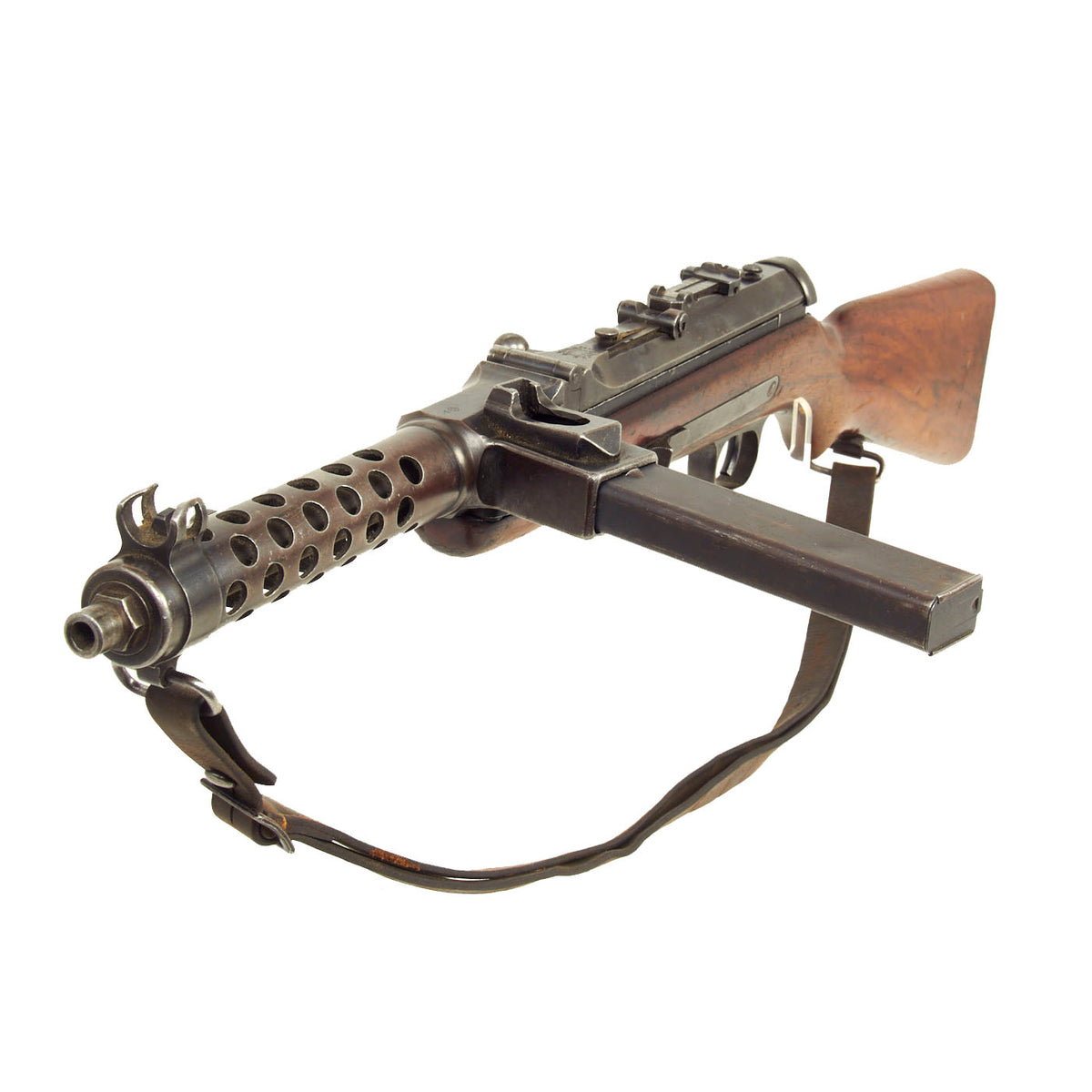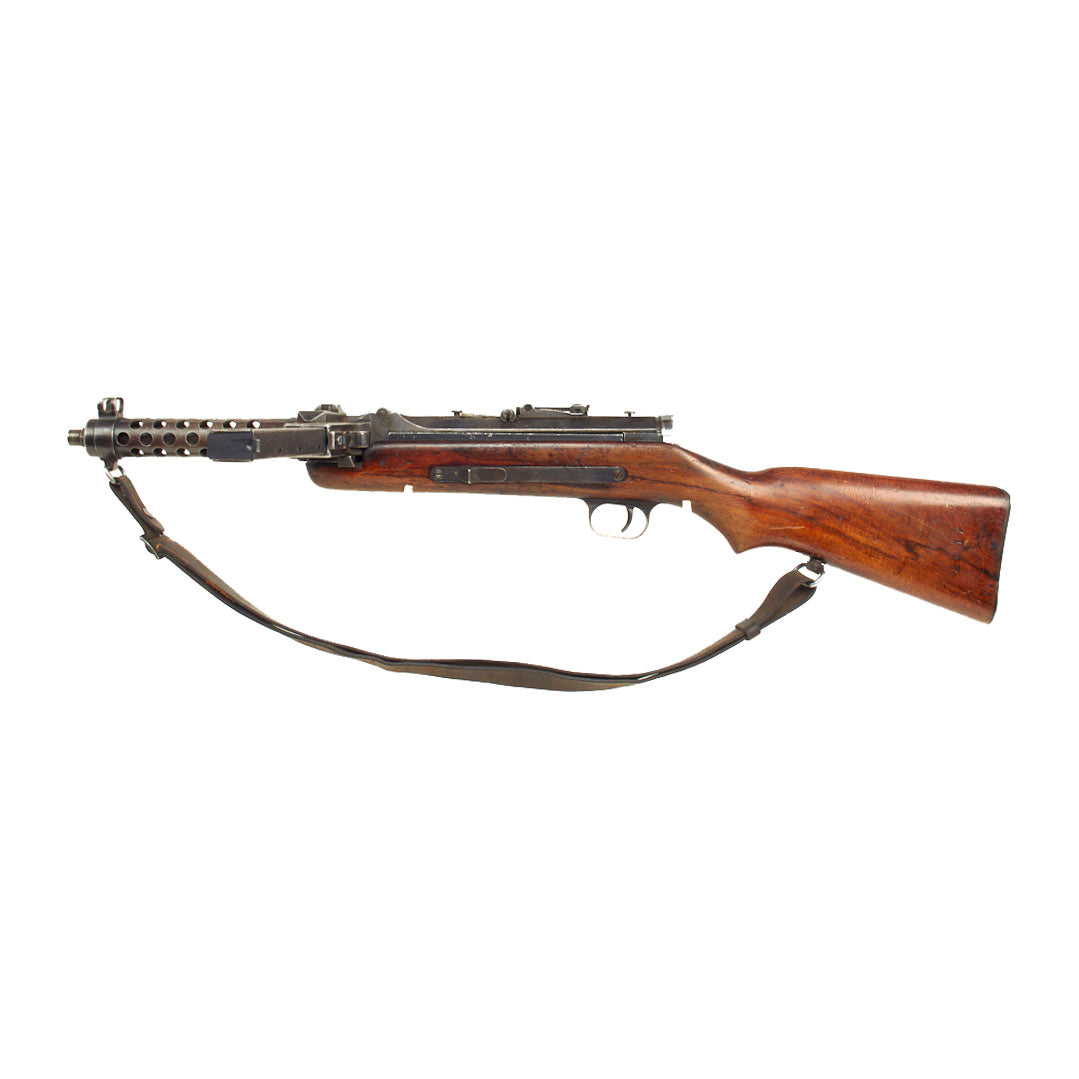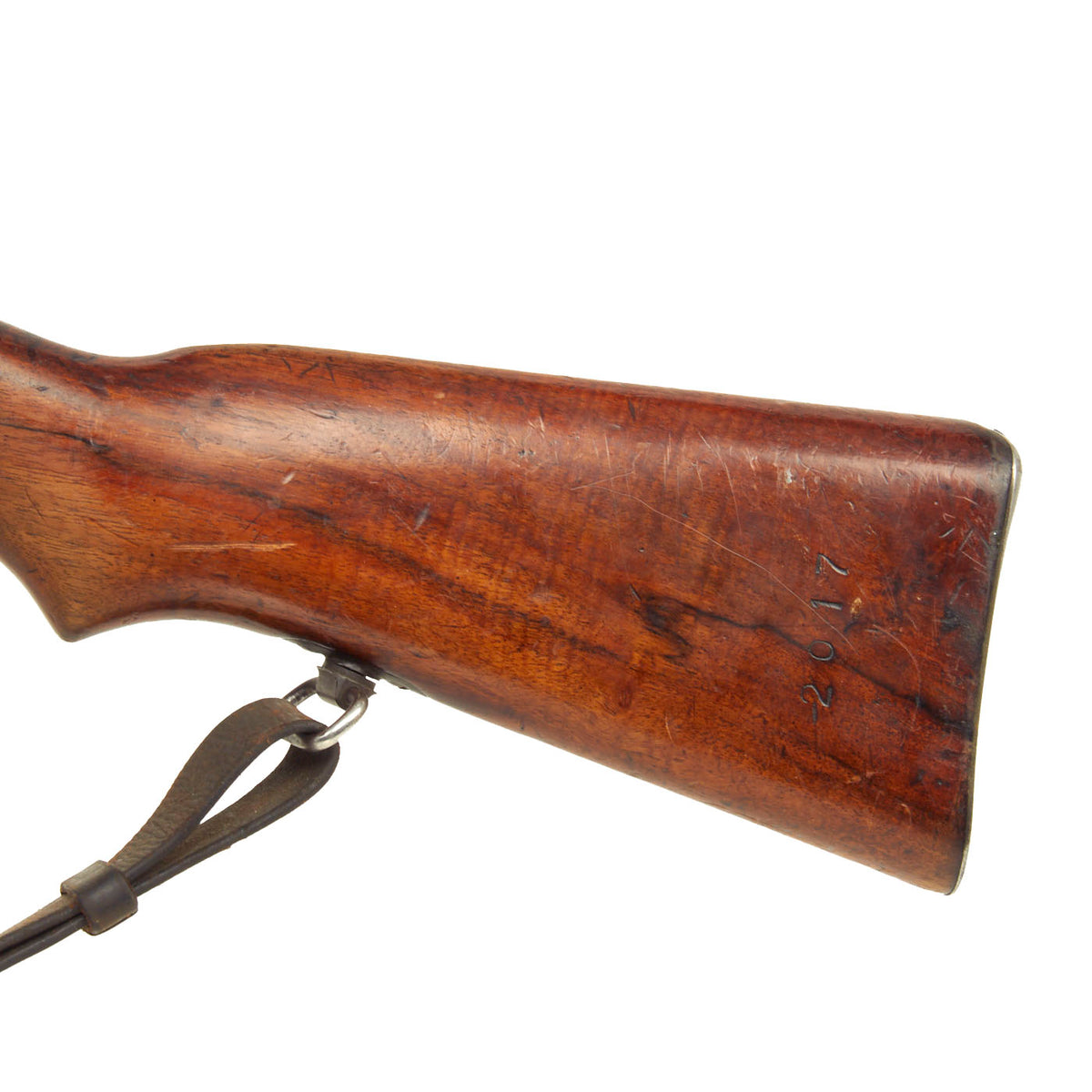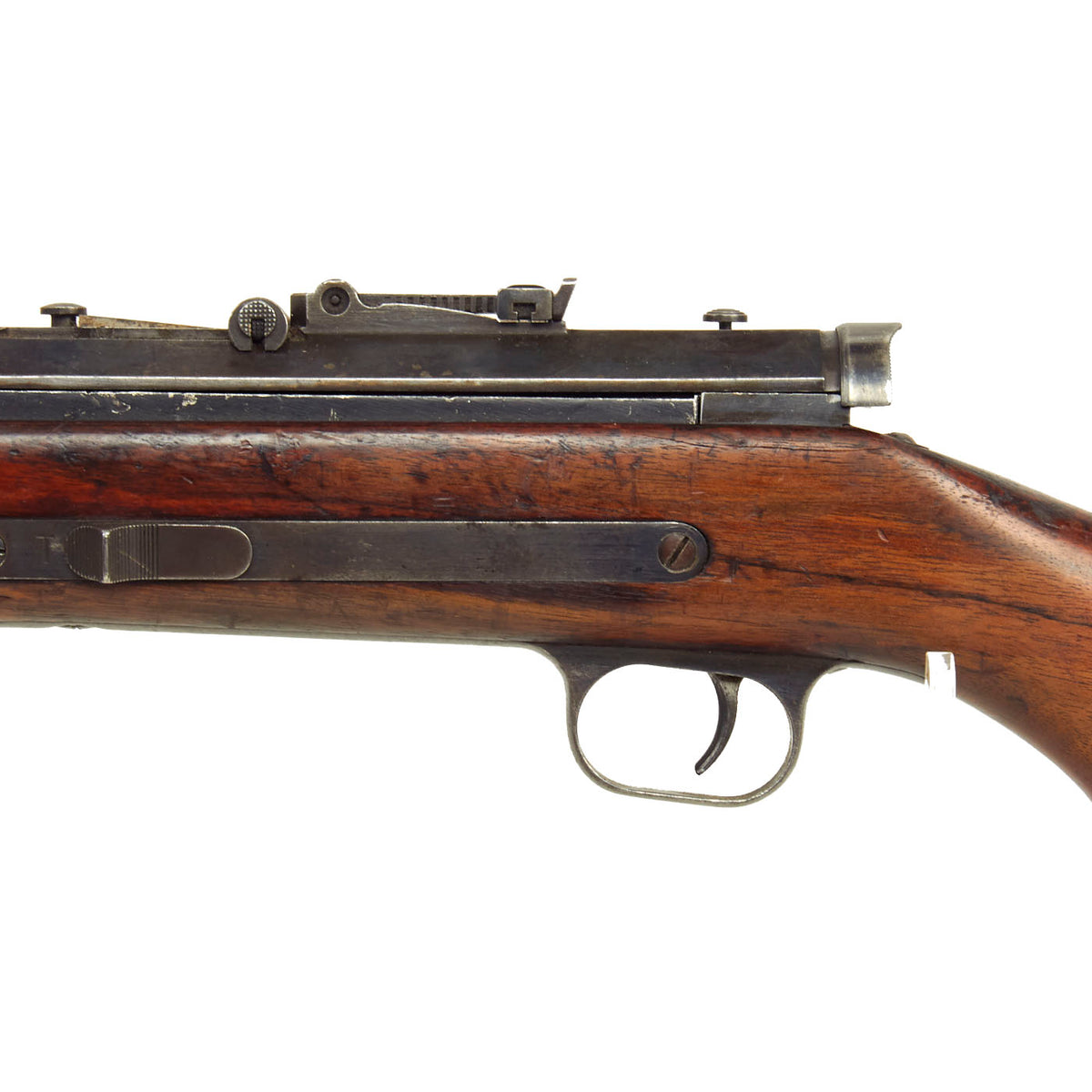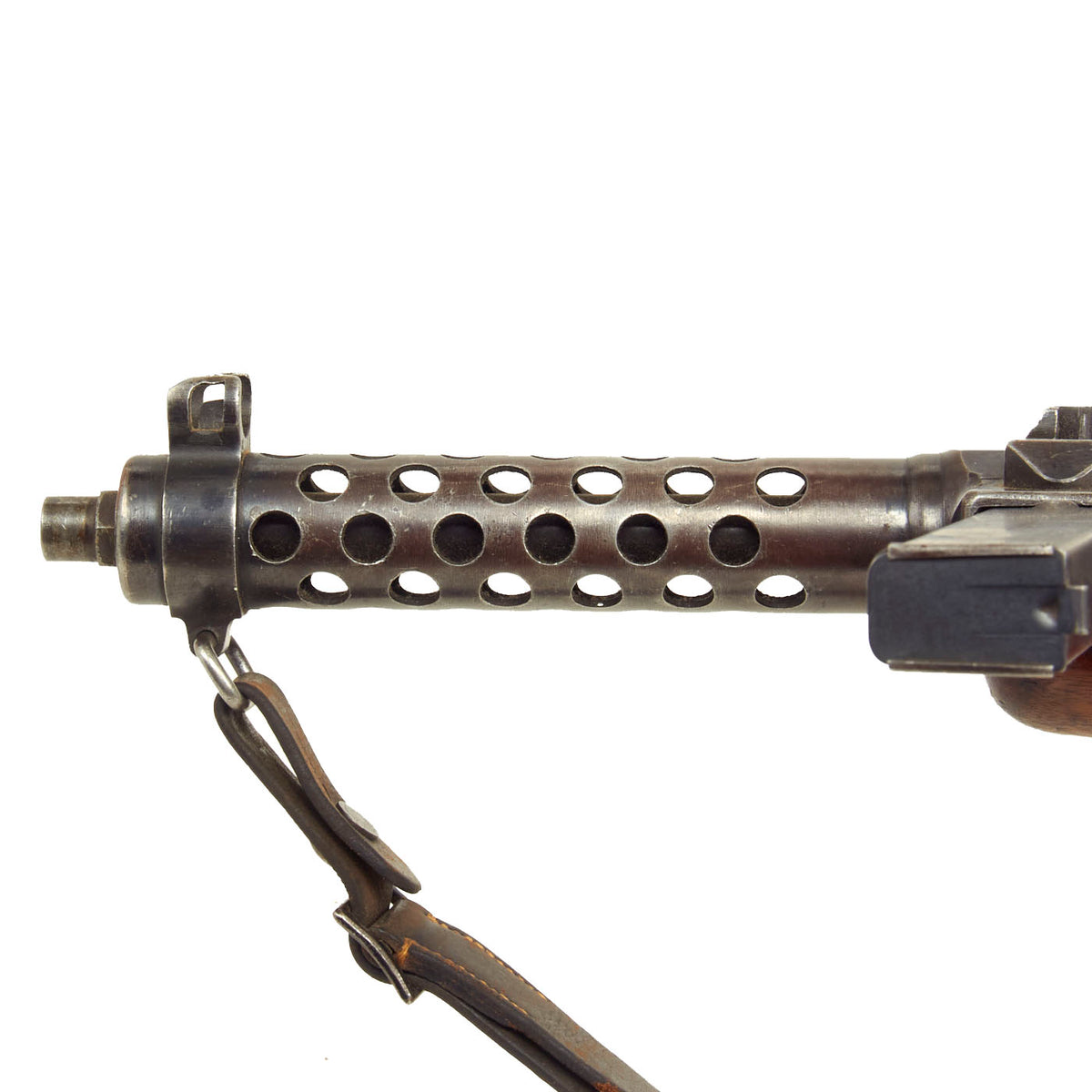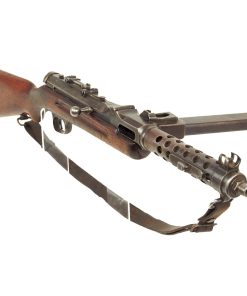Original German WWII 1942 Dated Waffenamt Marked Portuguese Contract MP34(ö) Steyr Solothurn Display Gun with Magazine & Sling Original Items
$ 3.295,00 $ 823,75
Original Item: Only One Available. This is a fantastic non-functional BATF approved non-firing display machine gun. In fact only 10% of the receiver remains, with the rest replaced by solid aluminum, but that is mostly hidden by the top cover resulting is a fully legal beautiful display “non-gun”. The magazine well portion and barrel jacket are intact and have no been altered, and it looks like the barrel may have not been deactivated, but we are not sure. The selector switch on the left side still works, as does the trigger, and the top cover still opens to show the dummy receiver. The safety in front of the rear sight is also still moveable.
This example is offered in fantastic lightly used condition, and is wonderfully marked with the Portuguese Crest and 1942 date both just forward of the safety and on the butt stock. It is also marked with the STEYR logo just behind the rear sight, and has the Steyr small logo on many parts of the gun. There are also multiple Eagle / 189 NSDAP Waffenamt inspection marks, which correspond to Steyr-Daimler-Puch AG. Wonderfully constructed by Steyr, with a ventilated barrel jacket with built in magazine loader in the magazine housing complete with wood butt stock assembly. It comes complete with an original magazine (where permitted) and leather sling.
This example was produced in 9mm parabellum, as used by countless German troops and other Nations friendly with the Germans. The condition overall is very good, with the wooden stock showing some great “flame” figuring. These really were the “Rolls Royce” of submachine guns.
These were long gone from IMA more than 20 years ago after the original release from Portugal in the early 1990’s. This won’t last long because you can’t find them anywhere else! Ready to display!
History of the MP34
The MP34 was based on a design for the MP18 by the Rheinmetall company based in Düsseldorf. The weapon is similar in design to the MP18 Bergmann, which itself saw service towards the end of World War I.
Restrictions on the manufacture of certain armaments within the 1919 Treaty of Versailles forbade Germany from manufacturing certain types of weapons, such as light automatic firearms (designated as SMGs with barrels in excess of four inches (102 mm) and magazines holding more than eight rounds). To circumvent the treaty, Rheinmetall acquired the Swiss company Waffenfabrik Solothurn in 1929 and began secret production of a prototype. What was to become the MP34 was originally designated “S1-100” using the company’s standard naming convention.
Due to the Solothurn Company being unsuited for mass production, Rheinmetall took a controlling interest in Waffenfabrik Steyr, an established arms manufacturer in Austria. Weapons manufactured by Steyr were sold via the Zurich-based trade company Steyr-Solothurn Waffen AG to both the commercial and military markets.
The MP34 was manufactured from the very best materials available and finished to the highest possible standard. It was so well manufactured that it has often been nicknamed the “Rolls Royce of submachine guns”. However, its production costs were extremely high as a consequence.
Portugal bought in small quantities the .45 ACP version and was adopted as Pistola-metralhadora 11,43mm m/935. Portugal also purchased small quantities of the S1-100 in 7.65 mm Luger calibre in 1938, and the weapon was adopted as the Pistola-metralhadora 7,65 mm m/938 Steyer submachine gun. In 1941 and 1942, larger numbers of 9mm MP34 guns were delivered to Portugal by Germany. In Portuguese service, the 9mm MP34 was known as the Pistola-metralhadora 9 mm m/942 Steyer. Many m/942 guns carry a Portuguese crest just forward of the safety mechanism. The m/942 remained in service with Portuguese Army into the 1950s, and was used until the 1970s by paramilitary and security forces in Portugal’s overseas African colonies during the Portuguese Colonial Wars.
Fast Shipping with Professional Packaging
Thanks to our longstanding association with UPS FedEx DHL, and other major international carriers, we are able to provide a range of shipping options. Our warehouse staff is expertly trained and will wrap your products according to our exact and precise specifications. Prior to shipping, your goods will be thoroughly examined and securely secured. We ship to thousands clients each day across multiple countries. This shows how we're dedicated to be the largest retailer on the internet. Warehouses and distribution centres can be located throughout Europe as well as the USA.
Note: Orders with more than one item will be assigned a processing date depending on the item.
Before shipping before shipping, we'll conduct a thorough inspection of the items you have ordered. Today, the majority of orders will be delivered within 48 hours. The delivery time will be between 3-7 days.
Returns
The stock is dynamic and we cannot completely manage it because multiple stakeholders are involved, including our factory and warehouse. So the actual stock may alter at any time. It's possible that you may not receive your order once the order has been made.
Our policy is valid for a period of 30 days. If you don't receive the product within 30 days, we are not able to issue a refund or an exchange.
You can only return an item if it is unused and in the same state as the day you received it. You must have the item in its original packaging.
Related products
Uncategorized
Uncategorized
Uncategorized
Uncategorized
Uncategorized
Angolan Rebel 1970s era 60mm Inert Display Mortar from Angolan Civil War Original Items
Uncategorized
Uncategorized
Uncategorized
Uncategorized
Band of Brothers ORIGINAL GERMAN WWII Le. F.H. 18 10.5cm ARTILLERY PIECE Original Items
Uncategorized
Uncategorized
Uncategorized
Australian WWII Owen MK1 Machine Carbine SMG Custom Fabricated Replica with Sling Original Items
Uncategorized
Uncategorized
Uncategorized
Uncategorized
Uncategorized
